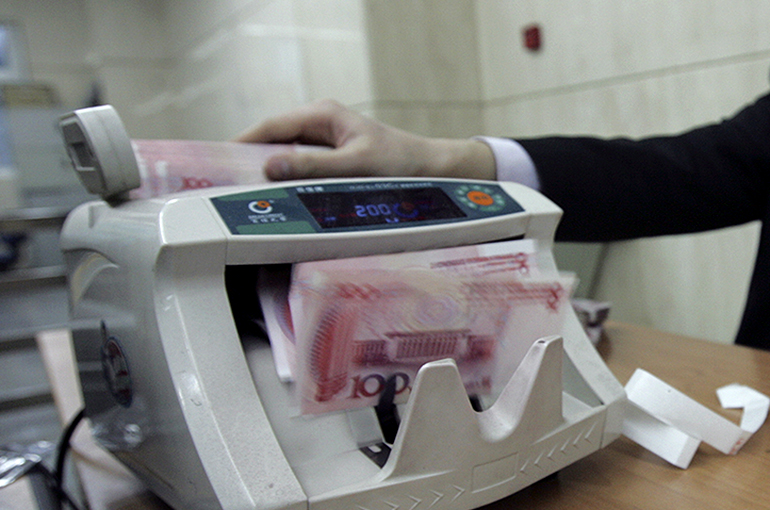 Yuan Hits Four-Month Low on Slide in Non-US Dollar Currencies, Analysts Say
Yuan Hits Four-Month Low on Slide in Non-US Dollar Currencies, Analysts Say(Yicai) March 22 -- The Chinese yuan slid to a four-month low against the US dollar today. This was mainly the result of rate moves by the Bank of Japan and the Swiss National Bank weakening non-US dollar currencies, according to analysts.
China’s central bank lowered the yuan’s central parity rate versus the US dollar by 62 basis points to 7.1004 in its fixing this morning.
The yuan was quoted at 7.2653 in the Hong Kong foreign exchange market as of 5.30 p.m., the weakest since Nov. 17, according to Sina.com, having depreciated by more than 400 bips from the previous day’s close. Onshore, the redback traded at 7.2256, down more than 270 bips from yesterday’s close, and the lowest since Nov. 20.
At the same time, the US dollar index continued to rise, reaching 104.37 as of 5.30 p.m., the highest in nearly a month.
The recent fluctuations in the yuan have mainly been caused by external factors, Zhao Qingming, vice president of the Institute of Huiguan Information Technology, told Yicai.
Non-US dollar currencies have been relatively weak, with the Japanese yen falling to its lowest in the past two years. This has led to a weakening of other currencies, and the yuan has also been affected, Zhao said.
Fluctuations in the yuan have mainly been influenced by the US dollar, according to Zhou Maohua, a macro researcher in the financial market department of Everbright Bank. Chinese stock market weakness has also hit sentiment in the foreign exchange market, he added.
Overall, however, fluctuations in the yuan have been smaller than those for other major currencies, and market sentiment is stable, Zhou said.
Global Rate Cuts
The Swiss National Bank unexpectedly cut its key rate late yesterday, which was seen as triggering some of the subsequent market volatility. Mexico’s central bank followed suit and Canada is believed to be planning to lower borrowing costs as well.
Two days ago, the US Federal Reserve predicted three more rate cuts this year, and the Bank of England is also expected to start cutting interest rates in June.
The central bank policies of developed economies mainly rely on data guidance at present, Zhou said, resulting in ambiguous policy paths, large short-term market divergences and sharp fluctuations, and this inevitably affects the yuan.
In terms of trends, major overseas central banks are gradually moving to an interest rate cutting cycle. The Bank of Japan is an exception, as it cautiously returns to a rate hiking cycle. But in terms of its economic outlook, it is still expected to maintain an accommodative monetary environment.
More importantly, Zhou noted, China’s economy is gradually approaching its potential level, and the fundamentals are more solid.
China cannot rely on the external environment to help preserve yuan stability, Zhao said, so it is necessary to steady the domestic economy. Also, China’s financial markets, especially for stocks and bonds, must be more stable, he said.
As for monetary policy, Zhao said he expects the People’s Bank of China to cut the reserve requirement ratio first and then interest rates, but the timing will depend on first-quarter economic growth.
Editor: Tom Litting